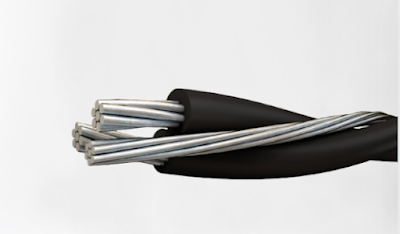How is an Expansion Valve Different from a Capillary Tube?
In the realm of refrigeration and air conditioning systems, the choice of expansion devices plays a crucial role in determining the efficiency, performance, and functionality of the system. Two commonly used expansion devices are expansion valves and capillary tube, each with its own unique characteristics and advantages. In this comprehensive guide, we'll delve into the differences between expansion valves and capillary tube, exploring their working principles, applications, and considerations for selection, while highlighting their impact on system performance and efficiency.
Understanding Expansion Valves and Capillary Tubes
Expansion Valves:
An expansion valve is a mechanical device used to regulate the flow of refrigerant into the evaporator coil of a refrigeration or air conditioning system. It controls the rate at which refrigerant enters the evaporator, allowing for precise control of the cooling process. Expansion valves operate based on principles such as temperature, pressure, or a combination of both, and they come in various types, including thermostatic expansion valves (TXVs) and electronic expansion valves (EEVs).
Capillary Tubes:
A capillary tube, also known as a capillary restrictor or simply a cap tube, is a thin, narrow tube that serves as a metering device in refrigeration and air conditioning systems. Capillary tube are typically made of copper or other materials with high thermal conductivity and low resistance to flow. They function based on the principle of capillary action, which allows for the precise control of refrigerant flow into the evaporator coil.
Key Differences Between Expansion Valves and Capillary Tubes
Control Mechanism:
The primary difference between expansion valves and capillary tubes lies in their control mechanism. Expansion valves regulate refrigerant flow based on temperature and pressure, allowing for precise control and modulation of the cooling process. In contrast, capillary tubes rely solely on the principle of capillary action, which provides a fixed orifice size and limited control over refrigerant flow.
Adjustability:
Expansion valves offer greater adjustability and flexibility compared to capillary tubes. With expansion valves, the refrigerant flow rate can be adjusted by varying parameters such as superheat, subcooling, or valve opening position. Capillary tubes, on the other hand, provide fixed orifice sizes that cannot be easily adjusted or modified.
Application Flexibility:
Expansion valves are suitable for a wide range of applications and operating conditions, including varying loads, temperatures, and refrigerants. They can adapt to changing system requirements and provide optimal performance under different operating conditions. Capillary tubes, however, are best suited for simple, low-capacity systems with relatively stable operating conditions.
Cost and Complexity:
Expansion valves tend to be more expensive and complex than capillary tubes, due to their precision engineering and control mechanisms. Capillary tubes are simpler and more cost-effective, making them a preferred choice for budget-conscious or less demanding applications where precise control is not critical.
Maintenance and Reliability:
While both expansion valves and capillary tubes require regular maintenance and inspection, expansion valves may be more prone to mechanical failures or issues related to valve wear, contamination, or adjustment. Capillary tubes, with their simple design and lack of moving parts, are generally more reliable and require minimal maintenance.
Considerations for Selection
When choosing between expansion valves and capillary tubes for a refrigeration or air conditioning system, several factors should be considered:System Size and Capacity:
The size and capacity of the system play a significant role in determining the most suitable expansion device. Larger systems with varying loads and operating conditions may benefit from the flexibility and precision of expansion valves, while smaller, simpler systems may suffice with capillary tubes.
Operating Conditions:
Consider the temperature, pressure, and refrigerant type of the system, as well as any specific requirements or constraints that may affect the choice of expansion device. Expansion valves are more versatile and adaptable to changing operating conditions, whereas capillary tubes are best suited for stable, low-capacity systems.
Cost and Budget:
Evaluate the cost implications of both expansion valves and capillary tubes, including initial investment, installation, maintenance, and potential energy savings. Choose the option that offers the best balance of performance, reliability, and cost-effectiveness for your specific application and budget.
Maintenance and Serviceability:
Consider the ease of maintenance, availability of spare parts, and potential downtime associated with both expansion valves and capillary tube. Choose the option that minimizes maintenance requirements and ensures reliable operation over the long term.



Comments
Post a Comment